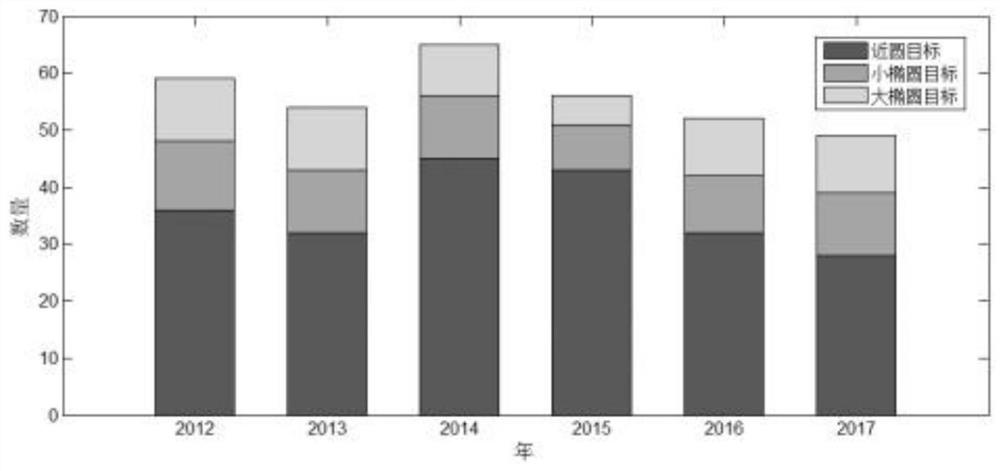A Reentry Prediction Method for Small Ellipse Targets in Sparse Data
A sparse data, numerical method technology, applied in design optimization/simulation, offensive equipment, projectiles, etc., can solve problems such as difficulty in judging orbit accuracy, large residual error of measurement elements, and difficulty in selecting initial values of ballistic coefficients.
- Summary
- Abstract
- Description
- Claims
- Application Information
AI Technical Summary
Problems solved by technology
Method used
Image
Examples
Embodiment Construction
[0034] The present invention will be further described below in conjunction with the accompanying drawings:
[0035] The present invention comprises the following steps:
[0036] Step 1: Process the N-circle data collected in the past several days (usually 5 days), and use the numerical method to determine the orbit of the single-circle data respectively, and obtain the corresponding close root number (σ). 1 ,σ 2 ,…,σ N ); remove the short period term in the close root number, and calculate the corresponding square root number
[0037] Step 2: Use the Kepler square root as the root system, use the semi-numerical method for orbital integration, and use the least squares method to fit the ballistic coefficient of the re-entry target; the perturbation items considered in the integration include the earth's aspherical J 2 item, J 3 term, atmospheric drag; the integral model is as follows:
[0038]
[0039]
[0040]
[0041]
[0042]
[0043] Among them, ρ is ...
PUM
 Login to View More
Login to View More Abstract
Description
Claims
Application Information
 Login to View More
Login to View More - R&D
- Intellectual Property
- Life Sciences
- Materials
- Tech Scout
- Unparalleled Data Quality
- Higher Quality Content
- 60% Fewer Hallucinations
Browse by: Latest US Patents, China's latest patents, Technical Efficacy Thesaurus, Application Domain, Technology Topic, Popular Technical Reports.
© 2025 PatSnap. All rights reserved.Legal|Privacy policy|Modern Slavery Act Transparency Statement|Sitemap|About US| Contact US: help@patsnap.com



